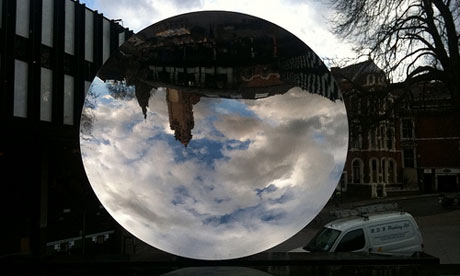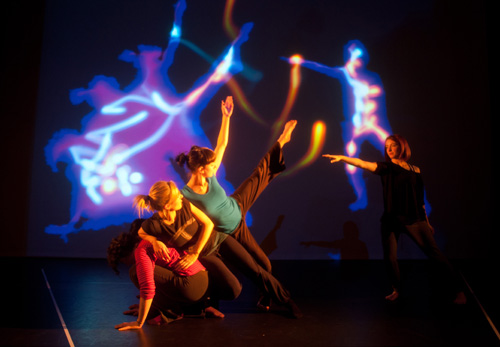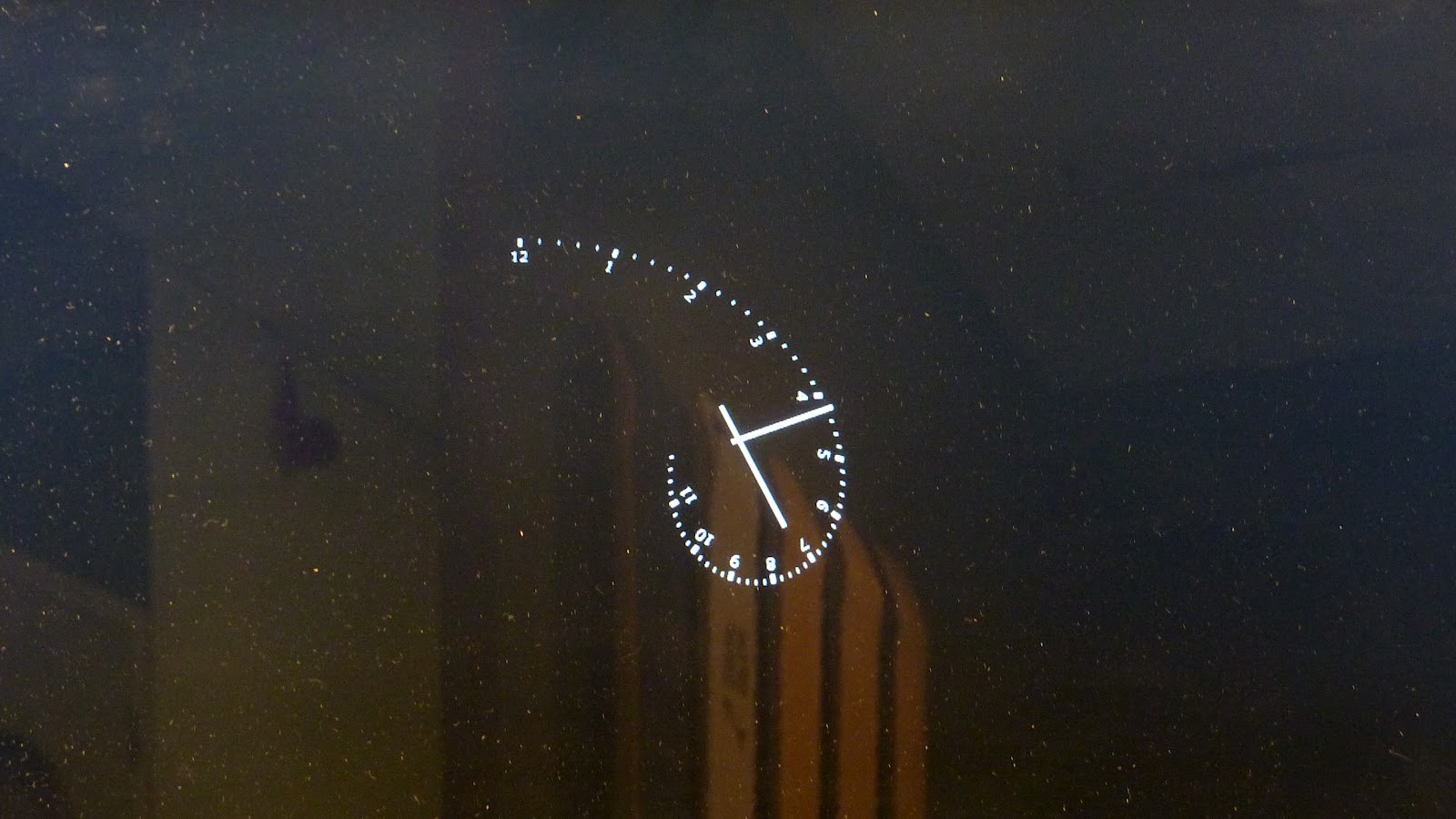
I See You... Or Do I?
None of us is an island unto ourselves. Any perception we may have to the contrary is merely an illusion. I will grant you that the illusion is strong and hard to break, but it is breakable. If we choose to get past it we can and should chip away at it, stripping away the mistaken notions that allow it to persist as we discover them. If we do not do this the illusion will continue to keep us separate from others and ourselves. The source of this illusion of separateness is our own mind.
Some have suggested to me that even if there is an illusion everyone has the same one, hence it does not really matter. They also question what the value of seeing through it would be, if that is even possible. My answers have generally been to state that it doesn’t really matter unless one decides it does and ignorance is not always bliss.
While there are many reasons for the illusion, two of the most prominent are our focus on our physicality, which I have written about numerous times and will not expound on here, and our lack of understanding of the nature of our awareness and perception. I think most get the first reason but many find the second one more challenging. That is how does one’s understanding of awareness and perception affect the illusion? I will touch on the first one, though only in passing and where applicable as the focus of this essay will be on our perception, the factors that affect our perception and to a lesser extent how this affects our relationships with others and vice versa.
You can observe how perception influences us first hand by watching people as they go about their business. Take a seat on a bench where there are lots of people and observe them. Observe them and watch who and what they look while trying to notice if this changes anything about them. Observe their facial expressions, posture and even how they walk as well as try to get a sense from them of their mood or state of mind. In all likelihood, the person you look at has some thoughts about what they observe and may even be aware of it and how they react, though it is not likely they consider why they react the way they do. Notice how people shift as they observe and react to what is around them and then consider that we do this too.

We go about our lives as if we are separate from what we observe even though what we observe and experience and how we react to it has a very significant impact on us and our relations with others. The fact we are not mindful of it does not change this.
Throughout my writings I have spoken about this at length and examined the nature of our thoughts, which lead to the illusion of separateness and their impact on us in a number of different ways. This is natural as pretty much everything we do is related to thoughts of one kind or another and the only awareness many have of self is the result of the thoughts they have. When we look around we have thoughts about what we observe and when we have an experience we think about it.
When it comes to the thoughts we have about what we observe, many believe that such thoughts are based primarily or even solely on perceptions that they are consciously aware of. However, this is not the case. They are primarily based on what the mind presents to us after it has processed the experience. This means that we are not reacting directly to the experience, we are reacting to our non/subconscious reactions to the experience.
Given that we are what we think I have always been a little surprised that more do not spend more time taking stalk of what they think. Yes, we do this though typically only when something about our experiences forces us to. This is mostly due to the illusion of separateness, but it is also because most do not understand how the mind works, they do not think about their thoughts and why they have them so we tend to be unaware of them and do not consider their impact. We humans tend to live “in our thoughts” unaware of their significance. However, for those seeking to develop, the problem with not doing so at least in part is that we remain in the dark about who and what we are.
The result of our paying casual attention to our thoughts is that we remain unaware of the influence our thoughts have on every aspect of our lives. Becoming more aware of such things can be very helpful in just about every aspect of our lives.
“It is important to notice where our attention goes as we can learn a great deal about ourselves by noticing what catches it. In many cases, it is an assessment of the situation so that we can determine if there are any threats to us. We do not need to spend every moment trying to notice what it is that we notice. Where noticing what we are attentive to is of the greatest value to us is when we are interacting with people, including ourselves, or find ourselves in new situations for these have the greatest impact on us."
What is it that we notice first about others and what does this tell us about ourselves? The reality is that we train our RM to notice certain things about people for any number of reasons. We base our reaction to current experiences on our previous reactions. We look for certain features, or signs of some kind from people that they meet a certain criteria. Where our attention goes tells us a great deal about ourselves, including how we have programmed our RM. Would it not be nice to know the criteria our RM uses? Not the ones you are conscious of, rather the ones our RM considers when it is determining of what we will eventually be aware.
The idea that we are not typically conscious of our “true” reactions to experiences may seem odd, most figure that what they think about is their raw thoughts about the experience they are having. This is not the case. Our RM actually goes through a process to determine what thoughts we will have consciously.”(1)
I also alluded to this in the essay on “Listening to Our Lives” (2), where I stated the following:
“To lift the illusion we must shift from passive to active living. If we don't like the clothes we must make new ones and discard the old. And how we make them moment by moment determines the clothes our spirit wears. Everything starts with the moment. We will not lift the illusion by continuing to try the same things. We must work on how we observe, evaluate and subsequently react to now."
Everything stems from the moment, so to burst through the illusion we must use awareness in the now to find and deal with the crumbs as we find them. When we react to an experience our reaction is now, the thoughts we used to manifest this reaction are in us now, hence our search for the crumbs is something we do in the now. This means that we must cease to allow our reactions to occur unexamined. We shift our focus to moment by moment experiential living, this means not passing by our reactions to work on them later.”
Experiences shape us, just as we shape our experiences. This statement may seem to be a paradox but it is not. Yes, it does appear to be another example of “Which came first, the chicken or the egg”, but only if you include time as we know it. But time is merely a byproduct of our minds and in a very real sense our minds are a byproduct of our relationship with experiences.
Just as chemicals react based on their nature, we attract particular experiences as a result of “who we are”. We then react to our experiences and are changed as a result. Further, by changing we in turn change what experience we attract. This relationship, the one between us and our experiences, is every bit as interesting as it can be challenging. It can be challenging in the sense that it is hard to believe that we create or attract the experiences we have when they put us out of our comfort zone or appear detrimental. As I have mentioned in other essays, few of us are ready to fully accept that we create our reality. It is interesting to look at and consider because it is quite a puzzle, one that can be a vehicle to great personal discoveries and truths that can help us understand not only who we are in a given lifetime and give us more freedom to choose.
Now, to us it appears that events happen and what others do is beyond our control or even influence. It also appears that we perceive reality as it is and then consciously and react to our perceptions of it. However, appearances are deceiving because not only are we are mistaken about what we perceive, we also perceive far more than we are conscious of and what we do not consciously perceive influences us.

We exist on more than the physical level, and our lowest aspect is our physical self. It is the other aspects of self that have the greatest influence on our experiences. Remember, our consciousness is not rooted in our bodies; it is “connected” to our bodies and what we perceive consciously is in a manner of speaking controlled by our non-conscious or subconscious mind.
Our conscious attention is almost completely dominated by our physical senses and the thoughts that arise from the interaction of our consciousness with our physical self, primarily our brain. This leads us to lose touch with our true nature and full potential, which also hampers our perception. The reality is our consciousness has access to multiple levels “above” the physical, and we perceive on these levels 24/7, even when we sleep.
Nothing exists without consciousness, therefore it precedes our physicality and chemistry or biology and everything that exists physically is the lowest or densest level manifestation of a consciousness of one level and type or another. Despite this, we are not aware of most of what we perceive because within a few years of being born we have turned most of our focus onto the physical world and on our conscious thoughts, nor are we aware of how our energy and that of the world around us interact.
Remember that everything is energy, and energy is in constant motion, these consciousnesses (of which we are but one) react to each other. They dance together unmindful of our thoughts that our consciousness and our experiences are mostly separate and independent. In a very real sense, our mind is the observer that arises out of the interactions between self and experiences. This is how we learn about ourselves, whether we know about it or not.
In this analogy our dance with other consciousnesses is expressed through our shared experiences. At the same time, we are not without influence over the dance, for our mind plays a significant part in how it progresses. All experiences and our reaction to them influence our dance, but few more so than those that involve other people.

We observe the dance through layers of thoughts that distort the image. We react to what we think is real, but it’s like a story whispered from ear to ear which ends up different than it started. Hence, we are not reacting to “what is real”; we are reacting to our own non-conscious reactions. Even still, as we react we affect the dance, generally slowly so its shifts are barely noticeable. So, as the dance continues we go about our day unmindful of it. Learning to be more mindful of it is one of the challenges life presents to us and through them what we present to ourselves in order to learn.
We perceive an enormous amount of “information” every moment. In many ways it is our rational mind, one that we have created, that controls what we are aware of or consciously perceive. This in turn establishes how we relate to everything. While our consciousness may be “joined” with our bodies through our mind, we are not taught how to use even a fraction of it.
As I mentioned above, everything is energy, and energy reacts to everything around us. To us, our reactions are due to our conscious choices; however, how we react to what we experience now is more the result of how we have integrated previous experiences. Therefore, what we perceive is an illusion created by our minds, for it filters, blocks and even modifies our thoughts and what we are conscious of.
I am not referring to our minds modifying what our five senses tell us, though this can also happen. A car is still a car and so long as our physical senses are functioning properly (though our mind is also a factor) we see a car. I am referring to our reaction to what we sense. Each moment we do make choices, but the information that we use to make choices most often occur at the non-conscious or subconscious level.
What we have come to like or dislike, whether we are conscious of it or not is the result of how our mind integrated our experiences. Each of us has said, at one time or another, “I never noticed that” or “I like this or that” without considering why. As the quotes above illustrate, we go about our day perceiving and reaction to perceptions often unaware why we react as we do. We are also mostly unaware of how they can influence us and our interactions with others.
We have all had both keen insights and misconceptions about others, though I would suggest that the latter outnumber the former. In the essay, Paying Attention to Our Attention (1) I examined what I call the Experience Reaction Sequence because having a clearer understanding of how the nature of perception and we react to experiences is a huge help. Knowing how our mind perceives and reacts it (whether we are conscious of it or not) helps us to get the most out of listening to our lives or pay attention to our attention.
We all react to the perception of our experiences; though we are not reacting to the actual “raw experience”. This is because our mind pre-processes the experience for us based on how it has been “programmed” by our experiences. It is important to note that our mind did not take this “authority” from us; we have given it away. The result is that, for the most part, it is our mind that determines what we are consciously aware of (3).
“In the moment, our minds are processing what we experience. Not just some of it, it processes every stimulus that we perceive (and we perceive what we are capable of reacting to). If each thought is a piece of luggage on the conveyor belt, those that reach the conscious level are the ones we have trained or taught our minds to pay attention to because they matter to us. By matter, I mean we have made them important. If we are preoccupied with other thoughts, then what is occurring now will be of less important and hence other thoughts will be filtered out, that is our minds will not place them on the portion of the conveyor belt that leads them outside the wall. If we feel strongly about something, and have not told our minds “we do not want to know about it”, our minds are more likely to present these thoughts to us."
It is not rocket science, we are creatures of habits, and we train our minds with every experience we have. When we casually think a thought such as “I do not need to know about this” and we do this often, we are telling our minds that we do not want these thoughts to appear outside the wall; and this is what it does. Contrary to popular notions, ignorance is not bliss.”
One of the most significant influences our perception has on us is in its affect on our interactions with others. Its significance is at its highest when we are experience something or meeting someone for the first time, though it remains a factor even with family members and people we have known for years. It should be obvious to anyone paying attention that how we perceive others influences our reactions with them. The questions are how and why. In order to understand how our perception affects our relationships we first need a clear understanding of the stages of perception.
I say we perceive in stages, this leaves the impression that there are distinct points at which we perceive various things. This is not what I mean as perception does not occur in distinct intervals, it is continual. The process might more aptly be described as grouping of reactions. For this examination, I break the process of perception into four stages as follows:
- Raw Perception of a Stimulus/Experience
- Initial Reaction of the Mind to the Stimulus/Experience
- Processing of the Reaction by the Mind
- Conscious Awareness of the Stimulus/Experience
Definitions:
Awareness: Awareness is the ability to react to a Stimulus/Experience
Consciousness: Consciousness is awareness plus memory
Stimulus/Experience
A stimulus is anything that we can react to on any level, if we do not react to something we are not aware of it (and I do not mean conscious reaction). I use the terms stimulus and experience interchangeably, though many include how we consciously reaction to something as part of “an experience” which I do not.
I would like you to use my definitions if only for the duration of this essay. Remember that words are just labels for things and I am specifying the way I would like you to use these two words as it affects how you interpret the perception process.
An experience or stimulus has non-physical and physical component. We can have an experience without a physical component, but not one that is solely physical. Physical components are perceived by our five senses, while non-physical ones are perceived by aspects of our consciousness, our mind being one of them, on various planes or “energy levels” (thoughts, emotions and other energies both internal and external to us). An example of an experience without a physical component would be when we experience our own thoughts or an energy that is non-physical in nature; though I will add that sometimes a physical sensation can accompany such experiences.
The Stages of Perception
Stage 1: Raw perception
There is a stimulus or experience we can be aware of ==> We become awareness of the stimulus
By raw perception I am referring to the initial reaction to or awareness of a stimulus; that is we simply become aware of it at some level. By “we” I mean that some aspect of our consciousness is aware of the stimulus. Examples would be the first perception of energy of some kind, or the first sight of something. Raw perception is not experienced by our mind; it only gets involved AFTER we become aware of it, which is when it processes our reaction.
Our consciousness perceives experiences as they occur; however, it is exceeding rare that we are consciously aware of perceptions as we experience them. You could say that if you were “conscious” of the raw experience itself, you would truly be “living in the now”.
Stage 2: The Mind Reacts to the Raw Perception
We become awareness of the stimulus ==> The Mind reacts to the stimulus
Only AFTER our consciousness has become aware of something does our mind become aware of it. Our mind is a construct of sorts, like the clothing we wear. Figuratively speaking, raw perception would be “we perceive something that is red” whereas our minds reacting to it would be to label that something as red.
Now, while our minds are aware of most of what we are capable of perceiving (what we are capable of reacting to), if we have not trained it to recognize and acknowledge certain perceptions then it may not notice them, that is it is essentially blind to them. That is why we must work on developing our sensitivity to what our consciousness is capable of perceiving or we simply will not see it.
Note that at this stage we are not yet consciously aware of what we are experiencing. We do not become consciously aware of a stimulus or experiences until after our mind has integrated the experience. By saying this I do not infer that we cannot be aware of the “raw perception”, I am saying we cannot be aware at this stage of the process unless we are “in the now.
Stage 3: Processing of our reaction by the Mind
The Mind reacts to the stimulus ==> The Mind integrates the reactions
Once our mind has become aware of our reaction it begins to process it. I use the term loosely as it happens automatically. Our mind uses a form of pattern matching to label what it has become aware of (and remember this is already second hand). In the essay Our Mental House Part 1: The Dynamics of Thought (4) I used the tuning fork analogy. In that essay I figuratively referred to a thought as a “bundle of tuning forks” and how activating one thought activates other thoughts that contain the same or similar tuning forks as a way of explaining how the mind does pattern matching. For brevity I will not explain it again here.
Our reaction is a “vibration”, and that vibration (which is a particular form of energy) will cause other thoughts we have to resonate with it. This is the pattern matching I was referring to above. An example would be if we smell something other thoughts that have that same attribute (i.e. same scent was encoded in the thought) will become activated. Reactions will continue to occur and as they do our mind determines what we will become conscious of about not only the original stimulus or experience but also about the thoughts that were activated as it processed the experience.
It is during this stage that the mind determines what information will be blocked and/or filtered out. The basis for this can be such as the experience is too sensitive and we have chosen not to consciously remember it or it could be deemed irrelevant at the time and so on. Remember, at this stage our reaction has not reached the level of conscious awareness. There is finite lag time between when we react and start to integrate an experience and when we are consciously aware of it. We reduce this lag time by reducing the amount our mind edits our experiences. The less our minds do this the closer we are to “now”.

Stage 4: We become consciously aware of a stimulus or experience
The Mind integrates the reactions ==> We are conscious of the stimulus or experience
This stage is where we become consciously aware of the stimulus or experience. For example, we may not consciously remember why we like or do not “like” someone, but when we observe them we “know we do not like them”. This thought also becomes an experience, and through the above process we will become consciously aware of how we will react to them such as having more thoughts about them and we may choose to avoid or confront them as a result.
Earlier I used the example of perceiving something that is red. The below summary, though somewhat inexact, may help you to understand what is occurring at the various stages:
- Raw perception – we perceive something that is red
- Mind reacts to the raw perception – the mind labels the “something” as red
- Mind integrates the perception - the mind determines what we “think and feel” about red
- We are conscious of the perception – we are conscious that we like or dislike the “something that is red”
The above process, while straightforward, occurs incredibly fast and in turn each thought we have becomes a stimulus that also goes through the same process. This is what keeps our minds occupied and why it is very challenging to shut it off. It is always processing something at one level or another and we only get the end result of that processing. This occurs not because we cannot know more than the end processing, it is because we have allowed and continue to allow our minds to do this on our behalf without questioned or due consideration. Both of these acts can modify the way the mind processes information, however, as long as we live in our thoughts we are bound by them.
Now, all the above is fine and dandy (as some would say), but what does this mean in terms of our perception of others and our reactions to and relationships with them? Essentially what it means is that we are not in control of our reactions as we have passed this off to our non-conscious mind to do for us. As a result we should question our perceptions far more often than we do.
Say we walk into a room and look at the people there. When we do this our mind is already actively reacting to everyone and everything we perceive. We are not conscious of any significant amount of this, what we get are the impressions our mind deems appropriate and/or necessary for the circumstances. What determines this is how we have programmed out minds. Further, our perception is affected by our emotional and mental state as well as what thoughts are active or were recently active.
Despite what we may think, we do not see things “as they are”, that is we do not get “raw perception”. We become aware of things AFTER our mind has integrated and interpreted them. Our minds do the least processing on what is familiar and the most on that which is new. It could be an object that is new or even the situation. When we encounter something or someone new our minds spend more time in the integration stage.
Despite the immense volume of preprocessing our minds do our conscious mind still wields the most influence. This is because our non-conscious mind is guided by our conscious thoughts. For instance, if one is the type of person who cares about others, their thoughts in this regard will get our non-conscious mind to provide additional information that might not otherwise have been available. We might cue in on people’s body language as well as their energy to discern their emotional or mental state. We may not realize we are sensing their energy; instead we may just have inklings about how someone might be feeling. We may even chalk it up to our reading their body language. Nonetheless, doing so will temper and reduce our tendency to be overly reactive and judgmental.
There are many factors that influence our perception of others. A list of the most significant would be:
- Our state of mind (clear, distracted etc.)
- Our emotional state (the mix of emotions we have at the time)
- Active conscious thoughts (what we are thinking at the time)
- Active non/sub-conscious thoughts
- Our nature (individuality)
- Our personality
- How objective we are
- Our reasoning skills
- Our past experiences in general
- Our past experiences in the current environment
- Our past experiences with particular people
- Our familiarity with someone (or lack thereof)
- Our familiarity with the environment or type of experience
- The persons appearance and demeanor
- Energy of the other person
- Ambient energies
- The environment (physical component)
The above list is not exhaustive, though it should serve to illustrate that a great many factors affect our perception at all times. There is no particular order to the list though I have grouped some factors together such as our energy and thoughts at the moment, how we “think”, our history and environmental factors.
Another significant factor that affects our perception, which is related to several in the list, is whether or not we view things as black and white or if we are comfortable with grey. The mind that prefers to black and white has a far stronger tendency to draw conclusions about what is perceived even when there is a fair amount of uncertainty whereas those who do not are able to live with the ambiguity inherent in many aspects of what we observe. The former are quicker to judge and their minds are harder to change even with strong or at times irrefutable evidence to the contrary. Note that adults tend to have very strong preferences for how they view things. By this I mean that it is very hard for an adult to get away from their preferred method. We can see this in how divided people can become as it is a challenge to be make the changes needed to view things from the other perspective.

We see this playing out in the politics of our times, where the battle lines are drawn between those who take a black and white view and those who do not. You could call the two groups conservative and liberal, but this is of course a generalization that is not always correct. Studies have shown that the IQ of people who identify themselves as liberal is somewhat higher than those who identify themselves as conservative. I believe part of the reason for this is that the minds that gravitate towards black and white are less fluid, less able to consider context and circumstances.
I say this not to devalue one over the other as the liberal mind can also be slow to make determinations or decisions due to the lack of “surety”, something the more conservative mind comes to more easily (for better or worse). Unfortunately, at least at this juncture, very few are able to adjust their perspective from conservative to liberal or vice versa when circumstances warrant it.
When our mind integrates new experiences it tries to frame them in terms of previous experiences. Some people want surety and so their minds will come to firm conclusions with less information because it will fill in the gaps even when confidence in a conclusion may be low. Minds more able to deal with ambiguity are less likely to come to firm conclusions and will wait for further information that will increase their confidence level. This also leads the more conservative mind to stereotype people more quickly and firmly than the liberal minded person who may decide to wait for further information about someone before jumping to conclusions.
On the other side, the liberal minded person may not determine a particular situation is threatening until it is too late. There are inherent problems with making decisions with incomplete information as there are with waiting for more information before coming to one. The tendency of our minds to come to firm conclusions about various things without supporting evidence is what the great thinker Bertrand Russell alluded to when he made the following statement:
“If a man is offered a fact which goes against his instincts, he will scrutinize it closely, and unless the evidence is overwhelming, he will refuse to believe it. If, on the other hand, he is offered something which affords a reason for acting in accordance to his instincts, he will accept it even on the slightest evidence. The origin of myths is explained in this way.”
It is impossible and frankly pointless to try to state which of the items in the list are the most important. Their relevance depends on the person, what is “going on with them at the moment” and the circumstances. If you look at the items in the list I think you will be able to find times in your life when different ones were factors in how you perceived others.
One thing is certain, any strong emotions we have at the time will play a major role in our perception. For example, if we are in a good mood we tend to overlook small things that might bother us at other times; however, if we are angry or concerned about something in particular we may become more judgmental.
The value of the list is that it should give you things to consider when you are viewing others. The list can also help one to be more understanding of how another perceives us and what might be going on for them that affects their perception. Doing so will not necessarily make our experiences with them any better, but it will put is in a better place to act honorably and respectfully and help us do so in a more caring and compassion fashion. Also, by realizing that many factors affect our perception we are better able to see past the illusion our minds create to avoid jumping to erroneous conclusions.
We go about our lives reacting to our experiences generally unaware of the dance that goes on behind the scenes. We react to experiences and have thoughts about them and then act on those thoughts with little consideration being given to why we have them in the first place. It is my hope that this essay will help you to start to explore and then understand why you react to others as you do.
Again, I am not trying to make definitive statements about how we perceive and react to others. Every situation and circumstance is different no matter how familiar it may appear to us at the time. When we are in a situation that is somewhat familiar we have the tendency to rely on the past, we take “things for granted”. We do this even though each and every experience brings new factors into play, even those that seem familiar. In the second essay in the Awakening Our Gifts Series titled “The Makings of Mind” (5) I suggested that:
“Examine your thoughts around these ideas; try to discover what you believe to be true. Your beliefs affect what you will be conscious of. A lack of belief in something is a blocking thought. You will not be able to get past it until you clear this belief. You do that by asking yourself, “Why do I believe this?” and examining the “proof” you have using the points listed above. We often assume things as true that we do not have “proof” of at an early age. If it is never challenged, it will remain whether we realize it or not."
Working to not be superficial in our observations or erroneous in our reasoning will not make us more sensitive to subtle vibrations beyond that of the lower emotional or physical planes, but it is an essential step in the process. We remove impediments to our awareness by changing how we react to experiences, which reduces the noise in our mind that masks our perceptions and them into the shadows.”
We can do what this passage suggests by trying to follow the suggestions in the following list (also from the Makings of Mind essay):
- Avoid making assumptions, while trying to notice what you assume when you do
- Question rather than simply accepting things at "face value"
- Do not jump to conclusions
- Always assume you could be wrong
- Hold no absolutes
- Listen with the intent to understand
- Avoid judging (this does not mean avoid deciding)
As you go about your day try to still your thoughts more, try to be observant without becoming subjective and when you do have thoughts about others consider why you might have then and whether they are valid or not. The reality is we have a tendency to presume too much, to think we know more than we do and to be more concerned about what we think than what may actually be the case.
Part of the secret to becoming less judgmental and to accessing more of our true nature and inherent gifts so we can live life to the fullest is to avoid taking things for granted. We should strive to be more active and aware in all moments, even those that appear familiar. Doing so helps us to clear up the illusion and get closer to living in the now.
I have posted the below poem before, but thought it appropriate as an ending for this essay...
There is a place
Where time is beside itself
And we walk in between
Silence and knowing merge
Without the slightest whisper
There is a place
Where time is beside itself
And questions fade away
Wonder and joy embrace
As if never apart
There is a place
Where time is beside itself
And everything is one
Power yields to surrender
And nothing remains unseen
And there will be is a time
We will find that place inside of us
And the uncertainty fades
Wanting becomes understanding
And all separation fades
© 2012 Allan Beveridge
References (*- denotes essays only available to site members of TheTwinPowers.com):

